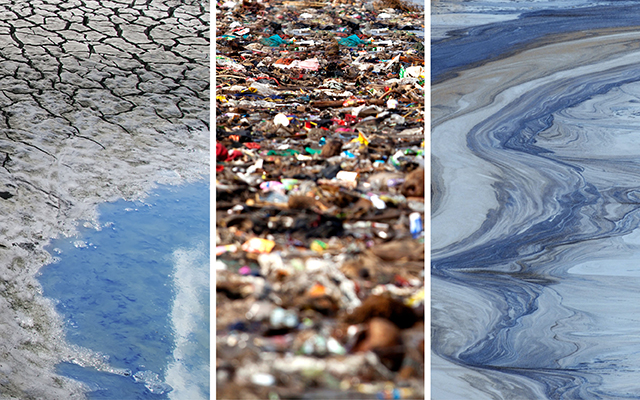One of the downsides of planning so far ahead for a print magazine is that you’re often writing about a season that hasn’t yet arrived. By the time this issue is in your hands, summer will be around the corner. But as I write this letter, it’s early April and we’re in the midst of the seasonal shift from winter to spring.
In the upper Midwest, plants are beginning to push their way through the ground and trees are starting to bud. For the most part, though, it’s pretty brown and dull as the land navigates the transition between final snow melts, spring showers, and the first blooms.
While the promise of vibrant natural beauty is around the corner, this period’s dinginess highlights an ugly truth — one that’s evident along our urban freeways, rural landscapes, and the banks lining our rivers, lakes, and streams: Our trash is everywhere.
Whether it flew out of a garbage truck on its way to the landfill or was tossed out of a car window, our collective waste — and wasteful habits — are blatantly obvious. Cigarette butts, fast-food bags and wrappers, plastic bottles and bags, and aluminum cans dot our roadways and neighborhoods. What’s camouflaged by the long green grass in summer is on display in spring.
In addition to being plain unsightly, our trash has significant potential to contaminate both our land and our water if it’s not cleaned up. According to the Ocean Conservancy, street litter — along with fertilizers, pesticides, sediment, pet waste, and automotive fluids — “can pollute water hundreds of miles downstream from their source.”
In urban areas, it washes into storm drains, making its way into the nearest body of water. In rural communities, the trash in streams and creeks flows directly into the nearest river, lake, or bay. Much of it eventually ends up in the ocean.
“Cleanup data tell us that an estimated 60 to 80 percent of marine litter starts out on land,” per the Trash Travels 2010 report from the Ocean Conservancy. “Lakes, rivers, streams, and storm drains, helped by the wind, transport litter hundreds of miles to the ocean. And ocean currents and winds carry that marine debris all around the globe.”
So those giant garbage patches in the middle of the Atlantic and Pacific? They didn’t get to be so big from debris discarded at the beach alone. Intentionally or not, we’ve all contributed to them to some degree. (For more on these plastic islands, see “Why Are Our Oceans Full of Plastic?”)
Which is why we’ve dedicated this issue of Experience Life to water — because while we might be part of the problem, each of us can also have a hand in the solution for cleaner, healthier H2O.
Perhaps it’s participating in roadside or beachside cleanups a few times a year or switching to greener weed-management methods that won’t leach into the groundwater supply. Maybe it’s attending your local city-council meeting to advocate the importance of water accessibility and affordability.
Emily Penn’s story might just inspire you to sign up for an environmental research expedition, while “Truth on Tap” may convince you to finally ditch the plastic bottles altogether. Whatever it is, every effort matters — the health of our water depends on it.




This Post Has 0 Comments